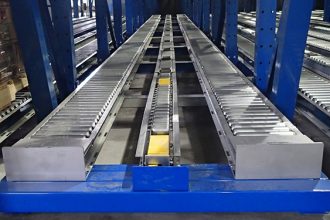Understanding Seismic Requirements

Before you install new racking, learn all you need about your region’s seismic activity and how that impacts your rack selections.
When it comes to earthquakes, it’s easy to think that outside of California, they’re not much of a concern for warehousing equipment choices and design. But the truth is that seismic considerations need to apply to all parts of the country. In fact, there are, on average, over 50 earthquakes per day around the country, of varying degrees. All of which pertain to your racking systems.
The first agency to weigh in on racking design and seismic activity was the Federal Emergency Management Agency (FEMA) in 2005. Since then, RMI and the International Building Code require that all pallet rack systems are designed and built to withstand seismic activity. While these requirements used to be classified by “zones” of the country, they are now much more detailed and specific to locations. In fact, two different warehouses in the same part of the state might have different requirements. When considering a racking project, therefore, it’s a good idea to consider a seismic force review with the rack manufacturing partner. You should also consult with the seismic design maps website. Here you can input your address and get recommendations depending on your seismic vulnerability.
With such specific requirements on racking based on location and seismic activity, it’s important to note that you may not be able to buy used rack from one region and move it to another. Also you may not be able to move racking from one location to another without first making sure the rack is structurally capable of withstanding all loading criteria in the new location.
The differences in requirements from one area to another based on seismic activity will include a variety of design considerations. For instance, a rack in California will probably require larger base plates and more anchors than one in Ohio. In higher seismic activity areas, you’ll also need to consider heavier gauge steel and frames with bigger footprints. Beam connector sizes may also l vary based on seismic activity levels.
Other considerations that will come into play when it comes to seismic regions and Site requirements include: Building codes, ranging from A to F; specific site location contours and subsequent design parameters; soil classification; and supporting concrete slab thickness.
To ensure you are adhering to all the requirements and specifications, consult with a knowledgeable engineer and rack manufacturer that understands the RMI Specifications. These suppliers and engineers understand the variations, codes and regional requirements.
Unfortunately, if your warehouse is located in a high-seismic area, the costs associated with rack safety go up. In California, for instance, concrete thickness may be several inches thicker than lower seismic locations. Multiply this by hundreds of square feet and you have a hefty bill. At the end of the day, however, the investment potentially saves your company from hurt or lost lives, product damage and liability.


